- Polka Dot Begonia: What Can You Do To Keep This Plant Healthy? - September 14, 2021
- Ficus Microcarpa: Why Is This A Must Have Plant? - September 13, 2021
- Begonia Ferox: How Long It Takes For Begoniaceae To Sprout? - August 24, 2021
The Angel Wing Begonia (Begonia ‘Angel Wing) is a member of the fibrous cane Begonia group and got its name from its foliage, which has the shape of angels’ wings.
People often grow Angel Wing Begonia for its beautiful, large heart-shaped leaves similar to two folded wings. The plant is native to Brazil, and it grows on upright stems with a magnificent flower display, unique colors, and attractive dotted leaves.
How to Identify Angel Wing Begonia
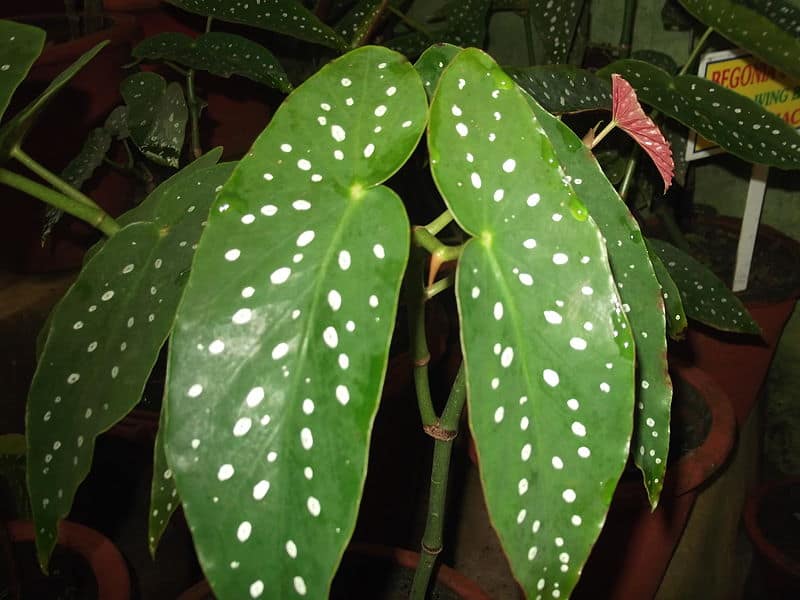
The main features to identify Angel Wing Begonia are the hanging clusters of flowers in pink, orange, white, or red that it produces. They are easy-care, beautiful, flowering plants that brighten the home all year.
How to Grow Angel Wing Begonia from Seed
It is vital to keep a few things in mind, even though it is pretty easy to start Angel Wing Begonia from seed. Essentially, the plant is a beautiful annual deer resistant and shade-loving, making a fantastic addition to nearly any landscape.
If you plan to grow your Angel Wing Begonia, the perfect time to start the plant from seed is mid to late January, unlike most other annual flowers.
Why Start Angel Wing Begonia from Seed
Your local greenhouse will have more expensive plants apart from the annual flowers. However, you can save a lot of money to grow a lot of them. You will also need a bit more effort and time when starting Angel Wing Begonia, even though beginning salvia, cosmos, or marigolds from seed can be as simple as possible.
Since you are not buying transplants from a grower, you can access an enhanced selection to choose from when you start this plant from seed. With that, you can get the most for your money. You can also have different choices to choose from when growing Angel Wing Begonia from seed since many commercial cultivators focus on three to four common Begonias types.
How to Propagate Angel Wing Begonia
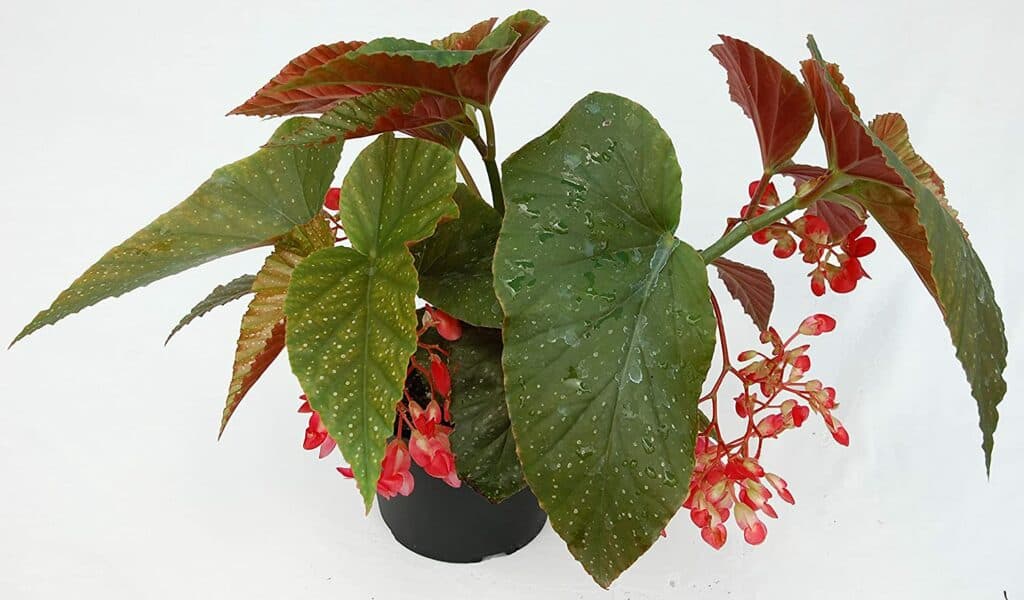
Propagating this plant is straightforward. It starts with pruning your Angel Wing Begonia, and you can keep the stems of the plant. You can then propagate the plant using the cuttings from the pruning. With that, you may want to make the plant even fuller by potting it up beside the mother plant or start a new plant.
Do you know that this plant roots quite easily?
Cut away the lower leaves and let the cuttings root by putting them in the water. Ensure that no leaves are submerged in the water. Get smaller sections after cutting the large parts. You can also follow this water rooting practice. The root will soon start growing. When the roots are some inches long, you can then start planting your cuttings.
While you can plant the cuttings in the soil directly, some people love the water rooting process. You can stimulate root growth by dipping the tip of your cutting in the rooting hormone before potting them.
Angel Wing Begonia Growing Conditions
Since it takes more energy for a plant to produce flowers than to maintain its foliage, Angel Wing Begonia requires optimal growing conditions to be healthy. Those that can plant Angel Wing Begonia outdoors year-round are gardeners who reside in the US warm climate. You can grow the plant year-round as a houseplant or grow it outdoors during summer and spring or indoors during winter and fall.
Best flowering and growth happen when you have 60 to 68 degrees of night temperatures that increase from 10 to 15 degrees by day. There will be no need for fertilizer and less water as growth slows during the shortest, coolest days of the year.
When in a well-drained, humus-rich growing medium, this plant thrives quite well. It pays to use a size or two larger containers than you could have selected otherwise since this plant tends to be top-heavy.
How to Plant Angel Wing Begonia
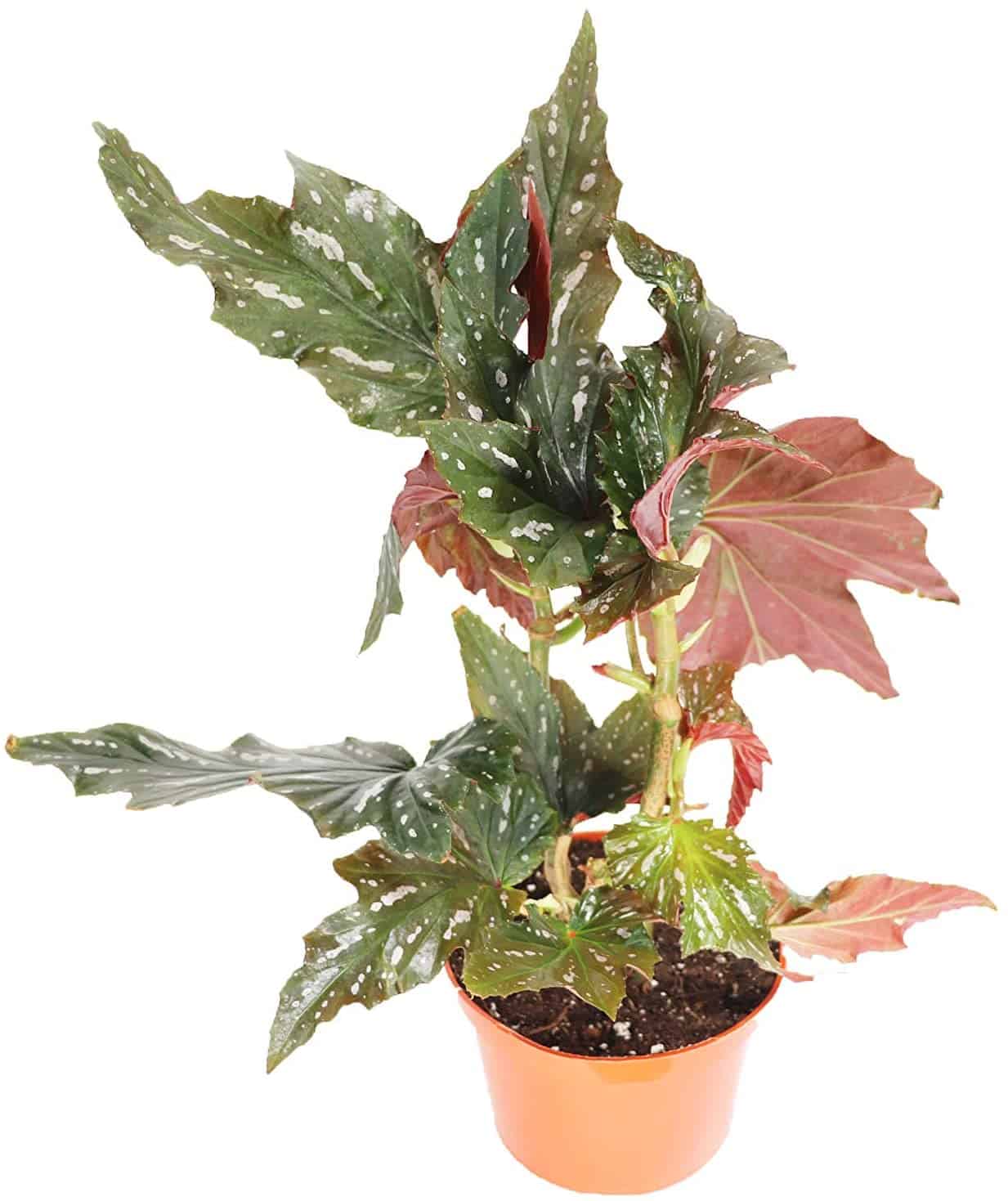
You can plant the Angel Wing Begonia outdoors in humid and warm weather. However, bring the plant indoors after placing it in pots when outdoor temperatures drop below 55 degrees Fahrenheit. The Angel Wing Begonia does best in pots that dry out quickly and love a loose potting blend rich in organic matter.
When your new plant is about 6-inches tall, do the following:
- Pinch the top growing shoot as the lateral shoots will grow in a few days
- Any extra shoots will develop a bushier form, and you can allow them from the stem base to grow
- Prune out any cane that starts grows or take over rapidly with only a few leaves
- Prune the plant in late spring and winter to around 6-inches when it is one year old
If you’re growing Angel Wing Begonia indoors, you will need some of these items:
- Garden snips
- 20-20-20 fertilizer
- Distilled water
- Spray bottle
- Compost (optional)
- Coarse sand (optional)
- Coco coir (optional)
- Loam (optional)
- Potting soil
- Planting pot, preferably wood or clay with holes in the bottom for drainage
- Perlite (optional)
- Rooting hormone powder (optional)
Angel Wing Begonia needs little maintenance, and you can quickly grow the plant indoors when you give it:
- Fertilizer
- Water
- Adequate air circulation
- Warm temperatures
- Humidity
Angel Wing Begonia Potting & Soil
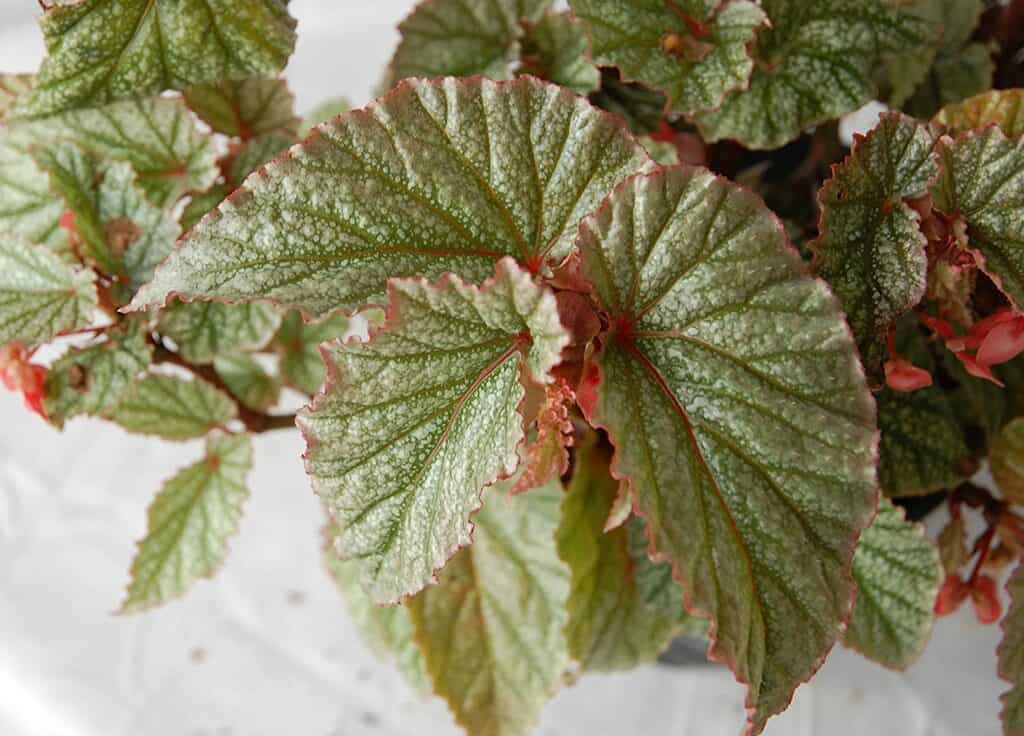
It is vital to determine whether or not the Angel Wing Begonia indeed requires potting. You may run the risk of root rot when you have more soil around the roots, even though it prefers to be potbound. You may want to reconsider repotting if it has a significant amount of soil within and around its rootball. If repotting is the way out, it is recommended to wait until summer or spring.
Wood or clay pot is a suggestion from the American Begonia Society. It has to be a sturdier container instead of plastic. With this, the plant won’t tip over when its roots become heavy. While these pots come in several colors, you can look for gorgeous ones that fit your home.
Use a mixture of equal parts of compost, sand, coir, and loam to fill the container. You can also fill the container with a quality potting mix. Another option for the coir is peat moss. However, it is not recommended because it can take several years to renew peat moss after being harvested from bogs.
Angel Wing Begonia Water Requirements
Be careful not to overwater the plant. You can allow the top inch of the soil to dry before watering when the plant is in a small pot. If you use a larger pot, let about 2-inches or 3-inches of the soil soak up before watering. Don’t put the plant in water and ensure proper drainage by dipping holes in the bottom of the container. The leaves may turn yellow and start falling off when overwatered.
Angel Wing Begonia Light Requirements
Shoot for filtered light in your climate as you replicate one of the conditions the plant naturally receives in its native tropical habitat. For example, put the plant in a place that gets dappled all-day sunlight or outside where it can receive afternoon shade and morning sun, or in a location with the transition zone between trees and open ground.
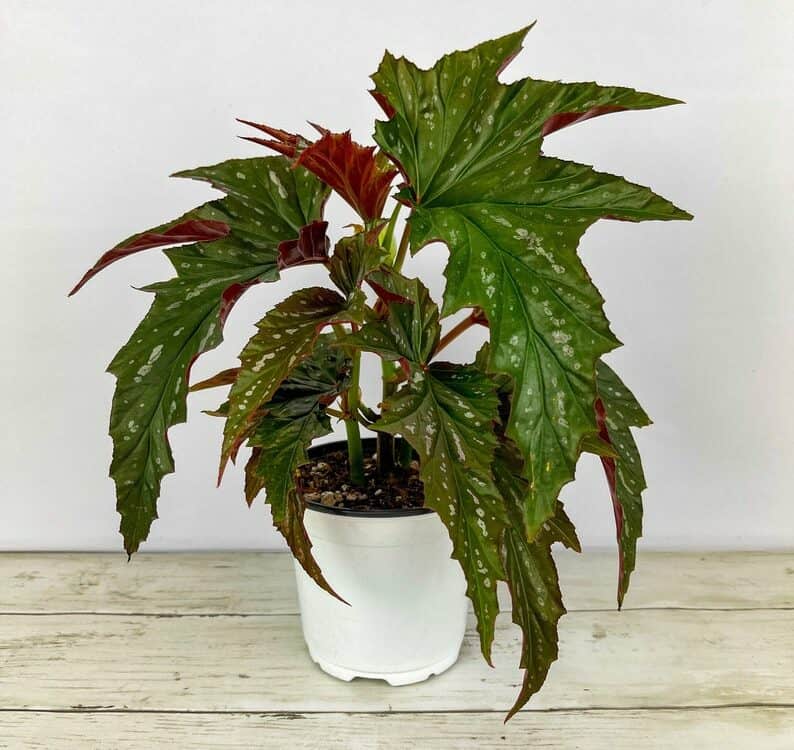
When indoors, let Angel Wing Begonia be in the part of the house that gets bright light. Don’t let it be too close to the window as the windowpane glass’s direct sun intensity can cause the leaf margins to turn brown or curl as it burns the plant.
Best Angel Wing Begonia Fertilizer
While other flowering plants may need high fertilization before producing flowers, this plant does not need much fertilizer. You can fertilize Angel Wing Begonia once a month with a half-strength and diluted water-soluble 20-20-20, 1.5-pounds houseplant fertilizer during the growing season from April through October.
Use a liquid plant food high in potassium to feed your Angel Wing Begonia monthly when actively growing. When you notice the soil turning damp, feed the plant to prevent leaf burn.
Best Angel Wing Begonia Companion Plantings
When deciding which plant to have as your Angel Wing Begonia companion, you can go with one color combination or complimenting colors. As an option, you can use one flower to make a statement while using the others as a backdrop. Here are a few companions for the plant.
Begonia and Silver Nickel Vine
Gardeners grow this tender herbaceous perennial, Silver Nickel Vine (Dichondra argenteus ‘Silver Falls’), as an annual plant. It has light silver leaves and can grow in low covering ground. As this plant can grow up to four feet long, you can echo your Begonia color when pairing it with Silver Nickel Vine.
Light Requirements
Silver Nickel Vine requires a sunny location that provides a few hours of evening or morning sun. Growers can have issues of slower growth or chances of root rot when placed in a shady spot.
Soil Requirements
It is vital to allow the pot to feel light in-between waters and keep the soil evenly moist. You will need to use the bottom-up technique of submersion to hydrate the plant. With that, you can prevent rotting foliage from prolonged leaves moisture.
Water Requirements
Silver Nickel Vine can withstand short-lived droughts. Ensure to rehydrate the soil with the bottom-up technique of submersion when the pot starts to feel light. Fill the saucer with 25 percent lukewarm water after placing it on a saucer.
Pros
- Pest-free
- Disease-free
- No pruning required
Cons
- Requires light shade
- Only seed is the recommended propagation strategy
- Suitable only as an indoor plant
Begonia and Torenia
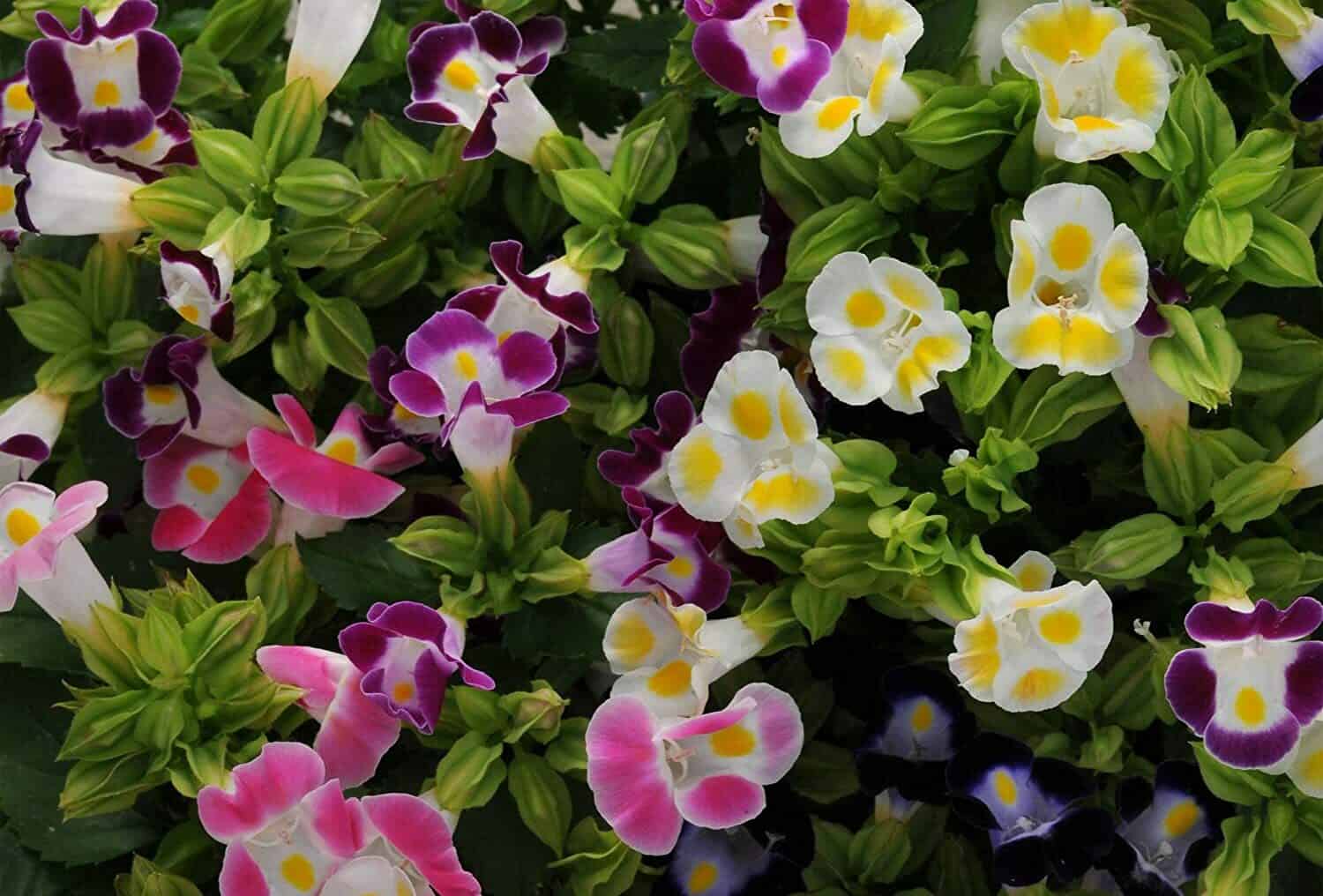
You can pair Torenia (Wishbone Flowers) with your Angel Wing Begonia to make a statement in the shade garden. The plant has pink, white, or blue flowers that have yellow markings. The plant can reach 12 to 15 in. tall as an annual landscape flower.
Light Requirements
As a plant that can adapt to several locations, Torenia likes a place to get afternoon and morning shade. A relatively shady part of the house is incredible for your plant if you are in a climate with hot summers.
Soil Requirements
Loamy and organically rich soil with neutral soil pH and slightly acidic is suitable for this flower. You can also prevent root rot by ensuring excellent soil drainage.
Water Requirements
When the soil is dry to the touch, you can water your Wishbone flower since they have moderate water requirements.
Pros
- Can tolerate cooler temperatures
- Don’t require excessive watering
- Can adapt to any location
- Several color choices
Cons
- Flowers don’t transplant well
- Can die when frost set in
Begonia and Black Mondo Grass
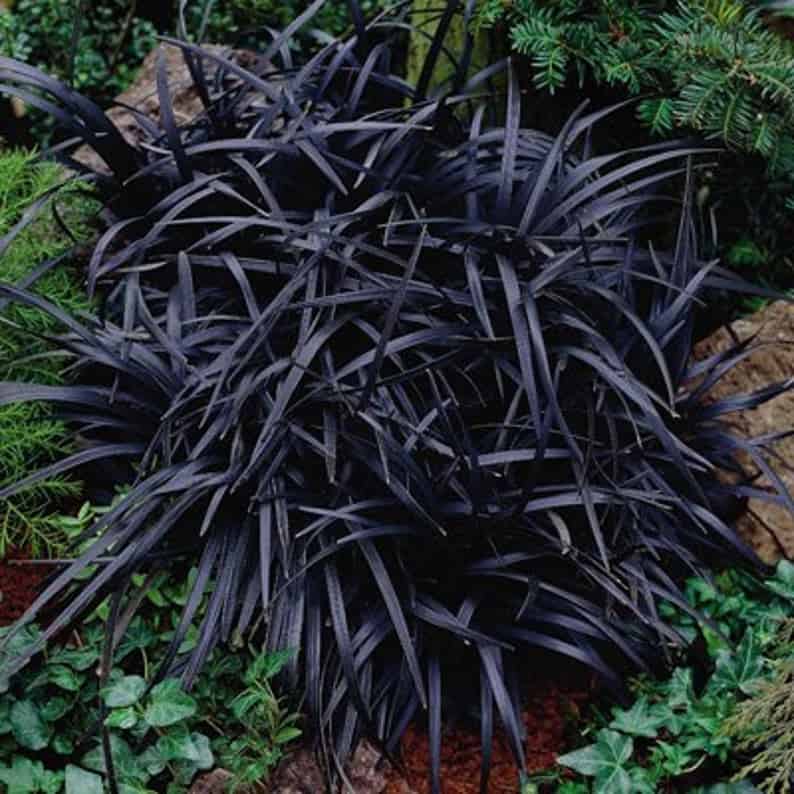
A perfect robust herbaceous perennial is Black Mondo Grass (Ophiopogon planisscapus ‘Nigrescens’) with shiny and striplike black leaves. It thrives well with Angel Wing Begonia.
Light Requirements
Full sun or partial sun
Soil Requirements
All-purpose plant food.
Water Requirements
Water regularly, preferably weekly or more often, to maintain evenly moist soil.
Pros
- Outstanding delicate textured color in containers
- Unique shade garden plant with different applications like masses, groups, or singles
- Modern look and high contrast foliage effects
- Evergreen
Cons
- It can only grow well in well-drained, evenly moist soils
- The plant can be scary
- Sun can be a conflicting issue
Begonia and Impatiens
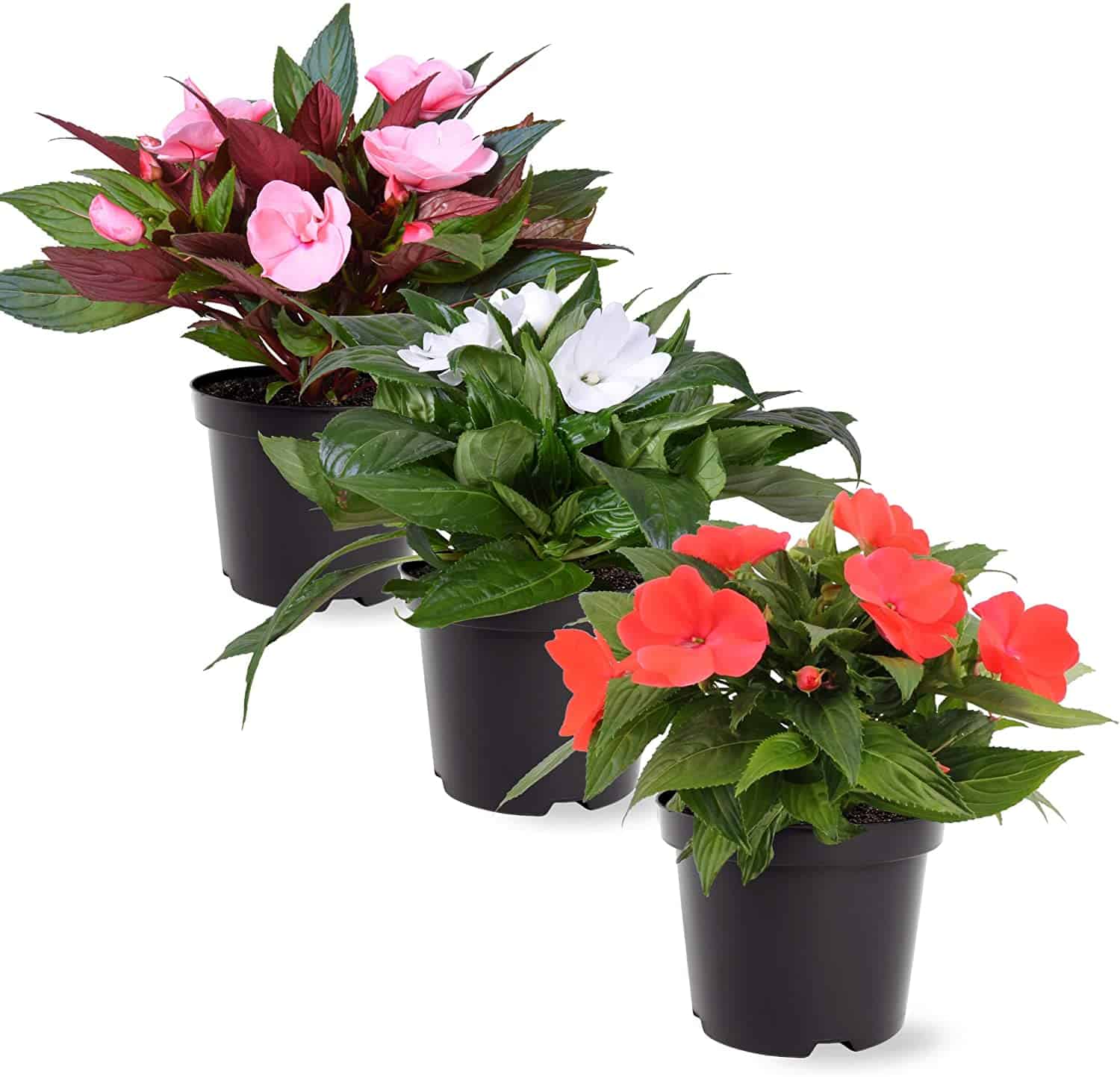
Impatiens come in various colors like yellow, purple, coral, violet, pink, red, and white and are tiny flowers. You need little maintenance to grow impatiens. Therefore, both impatiens and Begonia require moist soil that can drain quite well.
Light Requirements
The plant can thrive well with partial sun and can grow well in the shade.
Soil Requirements
The plant needs well-drained soil enriched with organic material.
Water Requirements
Two inches of water a week is suitable for the plant. Watering can increase to four inches when temperatures average consistently above 80 degrees.
Pros
- Quite popular
- It can thrive well in shady areas
- It can bounce back quickly after any dry spell
- Inexpensive and readily available
Cons
- It can turn to mush at the first light frost
- The plant can be affected by fungal blights in wet conditions
- Too much sun can scorch its leaves
Angel Wing Begonia Diseases and Common Problems
While mildew may not be a problem with Angel Wing Begonia, fungal disorders may occur when there is poor air circulation, water from overhead, or too crowded. Some of the potential issues with the plant include:
- Pest – it is not a bad idea to check the plant regularly for spider and aphid mites.
- Leggy growth – you may want to prune back the stems when they appear leafless and long. Essentially, growth will occur when you ensure not to leave out any nodes on the stems.
- Slow growth – consider checking if you have the correct temperature for the plant, provide enough light, or not feeding your Angel Wing Begonia well enough. It is also vital to check if it is not pot bound.
- Flowers fade quickly – the room may not be warm enough, not enough light, dry air, or not enough water. You can correct these issues by following the Angel Wing Begonia growing conditions as much as you can.
- Wilted and dropping leaves – this issue will happen when there is overwatering. In this case, the leaves can also wilt when you underwater the plant. The point is also the same when the pot is soaked, dry air, pest damage, or too much bright light. You can correct any condition possibly at fault by using a process of elimination.
Angel Wing Begonia Treatments and Maintenance
One of the best treatments you can give your Angel Wing Begonia is not to keep it in direct sun but indirect, bright light. In addition, maintain normal to cool indoor air temperatures of about 50 to 75 degrees Fahrenheit around your plant.
When you notice the potting soil feels dry to the touch, ensure you water the plant. Feed it with water until it begins to drain through the bottom of the pot. Ensure that the potting soil is not soggy or wet even as you keep it evenly moist.
Don’t forget to feed your plant with a high-nitrogen, lime-free, water-soluble houseplant fertilizer once every two weeks. Ensure that the fertilizer is at half the typical dosage rate. Never fertilize the plant when you notice that it is flowering.
Mist the Angel Wing Begonia with lime-free, warm water twice or thrice a week while keeping the air around it humid. You can also increase humidity around the plant by filling the drainage dish with some water and pebbles. Just ensure that the container is placed on the water and the pebbles.
Where to Buy Angel Wing Begonia Seeds Online
While you can buy your Angel Wing Begonia at your local garden center or plant nursery, you can also get many different cultivars and hybrids at these local stores. You can also get them from:
Where to Mature Buy Angel Wing Begonia Online
There are many places where you can buy your plant online. They are available on:
You can also get them at GrowJoy, North Carolina Farms, and many others.
FAQs
Question: Why are Begonia Leaves Curling?
Answer: A few things can lead to this issue, resulting in its leaves curling. Some of the things that can cause this problem include:
• Watering or fertilizing issues
• Fungal or pest diseases. When leaves curl, it could also be a sign of a fungal problem or pest issue.
• Sudden variations or changes in temperature. If you expose your plant to a cold shaft or when temperatures drop below 55 degrees Freheint, it can cause the leaves to curl.
Knowing which of these causes your Begonia’s leaves to curl can be tricky. Thus, check out the Begonia cultivation basics or signs of diseases to know if your plant is in a typical environment.
Question: Why Are Begonia Leaves Turning Yellow?
Answer: You can have a gentle issue at hand when you have leaves turning yellow on your plant. These issues can happen as the Angel Wing Begonia enters a latency period when the old foliage is dying back. This case can also be a fungal issue. Therefore, look for powdery mildew beneath the leaves.
Your plant leaves may even turn yellow due to root rot through the impact of overwatering or stem rot. Therefore, you will first have yellow leaves. However, it will soon turn brown, and the plant may die eventually.
Question: How much sun do Angel Wing Begonias need?
Answer: Angel Wing Begonias love a lot of sunlight. However, you should never place them directly in the sunlight. This is because the direct sunlight can burn the leaves of the plant. So, be sure to leave your Angel Wing Begonia in a bright room, in an area that doesn’t have direct sunlight.
Concluding Thoughts
Angel Wing Begonia enthusiasts won’t face any cultivation challenges. However, the plant does not tolerate sub-optimal care or neglect. If there is no adequate attention and care, Angel Wing Begonia can suffer many issues even though it is not as susceptible to disease as other houseplants. The plant will thrive well when you avoid cold temperatures exposure, intense, uninterrupted sunlight exposure, and overwatering.

